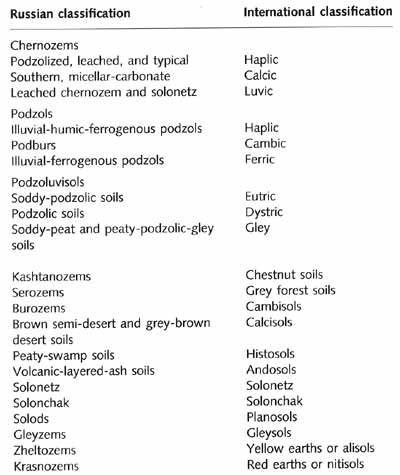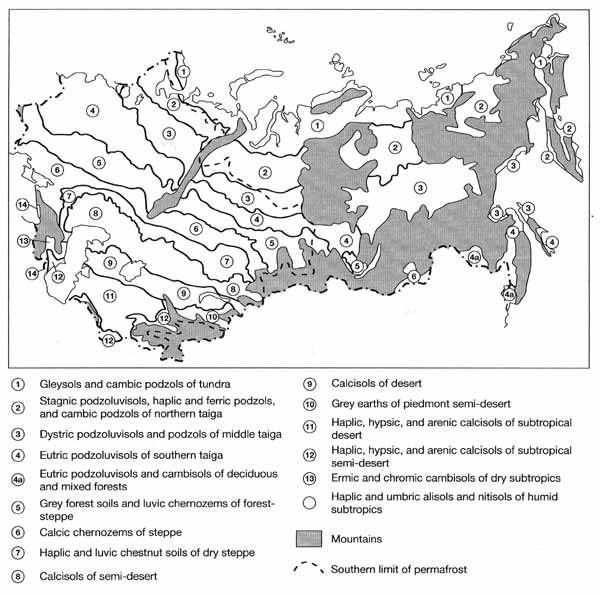Please put an active hyperlink to our site (www.rusnature.info) when you copy the materials from this page
Physical Geography of Northern Eurasia
Soils of Northern Eurasia
<<< Climate at Present and in the
Historical Past: Conclusions | Physical Geography Index | Soil-forming Factors >>>
Introduction
Pedology or soil science was established as a new academic discipline more than a
hundred years ago by the prominent Russian scientist Vasily Dokuchaev (1846-1903), who has
been recognized worldwide as its founder. Dokuchaev defined soil as an independent natural
body developed over time under the influence of five soil-forming factors: parent rock,
living organisms, climate, relief, and time (Dokuchaev, 1948). This has become a classic
definition of soil. He suggested a classification of soils based on scientific principles
and was the first to examine their geographical distribution. The development of the
theory and practice of soil conservation is also credited to this outstanding scientist.
Many other scientists, who worked in the former Soviet Union (FSU), also contributed
greatly to the development of genetic pedology: Vysotsky (1901), Neustruev (1913), Glinka
(1927), Volobuev (1963), Dobrovolsky (1967), to name but a few.
According to the canons of the Russian pedological school, the diagnostics, taxonomy,
and nomenclature of soils are based on the following principles:
- (1) profile method: soil profile is an integral unity of interrelated and interdependent
genetic horizons;
- (2) integrated approach: soil diagnostics include analysis and description of a number
of properties and indicators (morphological, physical, chemical, physicochemical,
biological, and mineralogical);
- (3) comparative geographical analysis based upon soil-forming factors (vegetation cover,
climate, weathering crusts, and geochemical landscapes);
- (4) genetic aspect: primary use of properties and indications connected with the origin
and history of soils related to the general geological history and paleogeography of a
given area. This approach uses a degree of expression and differentiation of soil profile,
accumulation or loss of separate compounds, and transformation of the soil-forming
material.
The application of this methodology reveals the main features of the soil geography of
Northern Eurasia, such as bioclimatic zonality, lithologic differentiation of soil cover,
landform and geochemical connections, and age differentiation of soil cover and their
relationships with soil-forming factors. While this methodology is widely used in the FSU,
in other countries different non-genetic criteria are employed (Klassifikatsiya, 1977). As
a result, systems used to classify soils differ. The lack of a uniformly accepted
classification scheme complicates work and international effort is currently aimed at the
creation of a standard classification of soils (–јќ-UNESCO, 1990; World Reference,
1994; Stolbovoy and Sheremet, 1996). To assist the reader, I have attempted to match the
classification used in Russian-language texts with that used elsewhere (Table 4.1).

Table 4.1 Classification of soil types
The main soil regions and the corresponding vegetation zones of Northern Eurasia are
shown in Figure 4.1.

Fig. 4.1 Types of soils and corresponding vegetation zones in Northern
Eurasia
The soil grouping of Northern Eurasia reflects much of the soil diagnostics,
nomenclature and definitions elaborated in the framework of international cooperation
during the compilation of the –јќ-UNESCO world Soil Map (FAO-UNESCO, 1990).
<<< Climate at Present and in the
Historical Past: Conclusions | Physical Geography Index | Soil-forming Factors >>>
Contents of the Soils of Northern
Euraia section:
Other sections of Physical Geography of Nortern Eurasia:
|
|